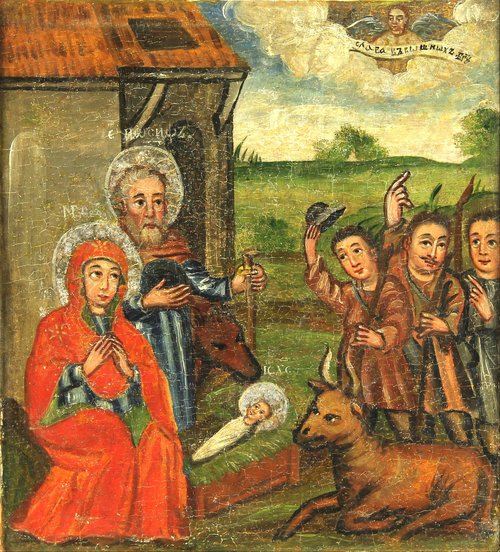Thirty second Christmas
- Worship Resources:
- Advent and Christmas
Singing the Faith Plus editor, Laurence Wareing, discovers Christmas surprises amongst the audio clips on the website.
[Originally posted in 2020]
The task of putting up thirty second music clips for each of the Advent and Christmas StF+ hymn posts has, despite the nervous sense of beating the shops to premature celebration, been a great joy. One by one I’ve discovered small, perfectly wrapped gifts. Many of them I was expecting, but many, many more offered unexpected surprises.
Perhaps more than at any other time of year, it is the combinations of words with certain tunes that so deftly evoke a certain mix of emotions, memories and images that are at once shared and deeply personal.
For me, it is especially the hymns of Advent that make me pause. Come, thou long-expected Jesus (StF 169ii) speaks to me of an ancient and present hope. It is a while since I’ve sung this hymn to John Stainer’s “Cross of Jesus”, but what a revelation it was to hear that combination again: the yearning stretch of the melody at the end of each third line (“born to reign in us for ever . . .”) somehow capturing the deep longing that is integral to the season.

I was reminded of several alternative tunes that suggest a slightly different mood or interpretation for familiar words – Away in a manger sung to “Mueller”, for example (StF 191ii), or Cradled in a manger sung to “St Winifred” (StF 197ii).(Image - Shepherds' Bow - a Ukrainian painting c.1650-1700)
Carl Daw’s fine John the Baptist hymn offers one of the most striking opening couplets of any Advent hymn:
Wild and lone the prophet’s voice
echoes through the desert still (StF 189)
Both tunes in Singing the Faith are, in their different ways, suggestive of John’s uncompromising call to repentance. David Ashley White’s “La Grange” has arguably a more mournful quality than the more familiar “Aberystwyth”. It’s worth listening to both.
Conversely, well-embedded congregational hymn tunes find a new sense of purpose in newer words: for example, Marjorie Dobson’s Birth brings a promise (StF 226, a refreshing carol “without the fairy tale’ elements”!) is given rich dignity by James Harding’s “Morning Star”. Meanwhile, the Welsh tune “Rhuddlan” (for me, long associated with Fred Kaan’s For the healing of the nations) beautifully suggests Simeon’s “long years of watchful waiting” in Tom Wilkinson’s’ modern text (StF 232).
Then there are those hymns which, even after six years, I’ve not yet sung in a church service. A number of them have, to my mind, attractive melodies that I’m now finding hard to get out of my head. There’s Guy Turner’s lovely “France Hill” for Andrew Pratt’s We see the eyes of Mary shine (StF 219) (how is it that it sounds so Christmassy!) and Dan Damon’s tune for his own words, Night of peace (StF 211). How is it I’ve not yet sung Mark and Helen Johnson’s jaunty Let me tell you about a baby (StF 209)? And what a good choice the editors made by including the evocative traditional Polish tune with words translated as God is born among us: earth receives the Christ child (StF 200).
These are all tunes that have the potential to signal “Christmas” every bit as powerfully as the opening phrases of Once in royal David's city (StF 214), and with equally memorable words.
Yet is it heresy to say that, in the end, it’s the tunes that evoke Christmas even more than the words? Brightest and best of the sons of the morning (StF 227) has always struck me as having not one but two of the most attractive: “Spaen” and “Epiphany” – each of them rich in melody and harmony, each of them at the same time warmly thankful and (that word again) ‘yearning’ with Christian hope. I wouldn’t be without either.
However, this year I’d also like to try out Peter Harding’s interesting suggestion. He comments that this text “really sparkles” when sung with the swinging syncopations of David Lee’s high energy “In the beginning” (StF 108).
It’s a wonderful combination – at once reverent and joyous. For me it’s this year’s thirty second Christmas revelation.